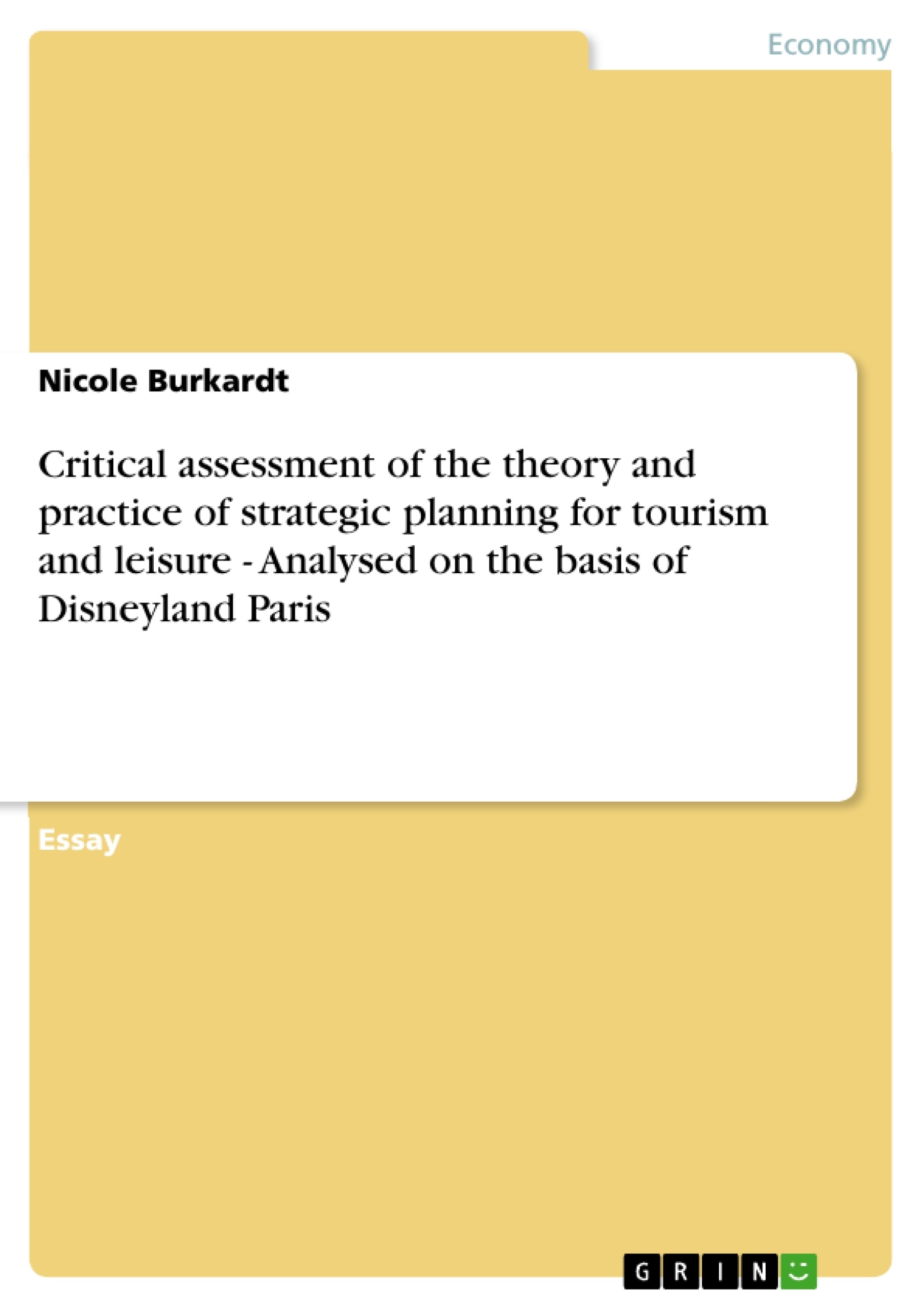Tourism is said to be the largest industry in the world. More and more people have the possibility to travel around the globe thanks to cheaper flights and increased leisure time. More than 760 million international tourist arrivals worldwide were counted in 2004 WTO, 2005). According to the WTO, international tourism revenue reached a new record high of US $ 622 billion in 2004. 52% of it was earned by Europe, 21% by the Americans, 20% by Asia and the Pacific, Africa and the Middle East contributed with 3% each (South African Tourism, 2005). Moreover, the tourism and travel industry supports directly and indirectly approximately 200 million jobs worldwide, this is 8% of the total employment at present, which is expected to grow to 260 million jobs in 2011 (Hall and Page, 2002). These figures give us a short impression of the importance of this sector. However, the tourism industry is very volatile. Political changes, the opening of former communism countries like China or Cuba, permanent economic fluctuation as well as social, environmental and technological changes influence the tourism industry. Nowadays tourists prefer high quality standards, safety environments and interesting locations and are more concerned of environmental impacts (Gunn and Var, 2002). All the above mentioned facts show the necessity of effective and sustainable tourism planning.
This assignment will assess the theories of strategic planning and will investigate its application in practice on the basis of two case studies. One case, The ‘White Paper Plan’ South Africa, is an example for good practice and the other, Disneyland Paris, is an example for bad practice.
Inhaltsverzeichnis (Table of Contents)
- Introduction
- Theory of Strategic Planning
- What is Strategic Planning?
- Five approaches related to tourism planning
- Practice of Strategic Planning
- When Strategic Planning is done right
- 'The White Paper on tourism', South Africa
- When Strategic Planning goes wrong
- Disneyland Paris
- When Strategic Planning is done right
- Conclusion
- Bibliography
Zielsetzung und Themenschwerpunkte (Objectives and Key Themes)
This assignment aims to critically assess the theory and practice of strategic planning for tourism and leisure. It examines the efficacy and shortcomings of strategic planning through two case studies: the 'White Paper Plan on tourism' in South Africa and the Disneyland Paris project.
- The importance of strategic planning in a volatile tourism industry.
- The role of SWOT analysis in identifying strengths, weaknesses, opportunities, and threats.
- The significance of multi-sectoral involvement in tourism planning.
- Different models of strategic planning and their application in the tourism industry.
- The impact of effective and ineffective strategic planning on tourism destinations.
Zusammenfassung der Kapitel (Chapter Summaries)
The introduction establishes the significance of the tourism industry and its volatility, highlighting the need for effective and sustainable tourism planning. It introduces the two case studies: the 'White Paper Plan' in South Africa and Disneyland Paris, which represent examples of good and bad practice, respectively.
Chapter 2 explores the theory of strategic planning, defining it as a process for determining a company or destination's current position, desired future state, and the strategies to achieve it. It examines different models of strategic planning, including the classical, processual, evolutionary, and systematic approaches, each providing a unique perspective on the nature and implementation of strategy.
Chapter 3 delves into the practical application of strategic planning, focusing on both successful and unsuccessful case studies. It analyzes the 'White Paper Plan on tourism' in South Africa as an example of good practice, highlighting its strengths and effectiveness in achieving its objectives.
Schlüsselwörter (Keywords)
The main keywords and focus topics of the text include: strategic planning, tourism, leisure, SWOT analysis, case study, 'White Paper Plan', South Africa, Disneyland Paris, tourism industry, tourism planning, models of strategic planning, good practice, bad practice.
- Quote paper
- Nicole Burkardt (Author), 2005, Critical assessment of the theory and practice of strategic planning for tourism and leisure - Analysed on the basis of Disneyland Paris, Munich, GRIN Verlag, https://www.grin.com/document/66427



